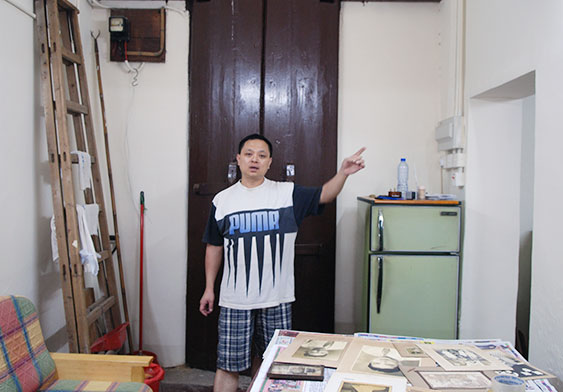
Dwelling space allocations and tax payments
Ng Chin Hung recalls how three generations lived together and paid government rents-Photo taken by HKMP Team (2012)
Dwelling space allocations and tax payments
Ng Chin Hung recalls how three generations lived together and paid government rents-Photo taken by HKMP Team (2012)
The ancestral house in 2nd Lane of Nga Tsin Wai where four generations of Ng Chin Hung’s family lived together
Ng Chin Hung’s family’s ancestral house was located in the 2nd Lane of Nga Tsin Wai village and had an area of around 0.03 acres (roughly the size of three standard houses in the walled village). During pre-war times, Nga Tsin Wai village served as a granary, and many houses within the walled village doubled as cow and pig pens. When they heard the ‘Red Hair’ thieves were planning to raid and rob their homes, villagers would pull up the drawbridge at the gatehouse to protect themselves and their animals. In the early days, rich families lived in larger, three-hall houses in Mau Chin in front of the gatehouse, while their daughters-in-law, maids, concubines and other servants cared for the livestock, food and farm tools in dwellings inside the walled village itself.
Ng Chin Hung’s great-grandparents lived in Mau Chin, while their children moved into the walled village after getting married. When their house at Mau Chin was demolished by the Japanese army during the occupation years, the family’s great-grandmother moved into the village. During his childhood, Ng Chin Hung lived together with his great-grandmother, grandmother, parents, elder sisters and younger brother. At first, his grandmother lived in the smaller 0.01-acre house, while the rest of the family occupied the lager 0.02-acre unit next door.


 BACK
BACK  CLOSE
CLOSE 